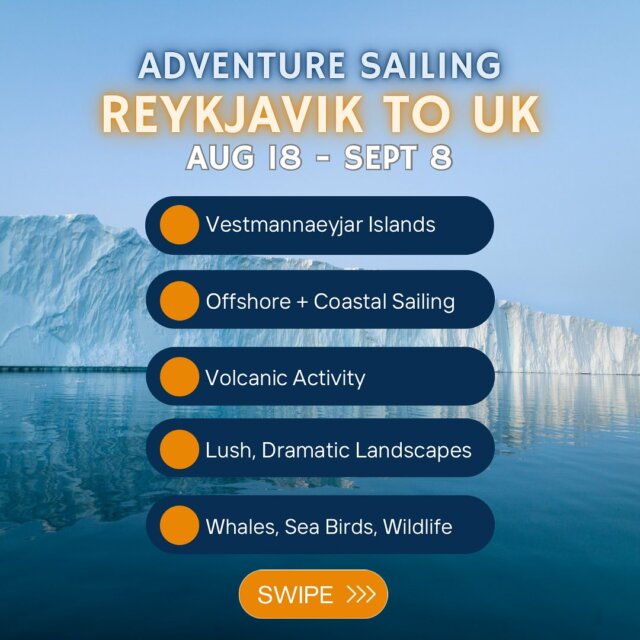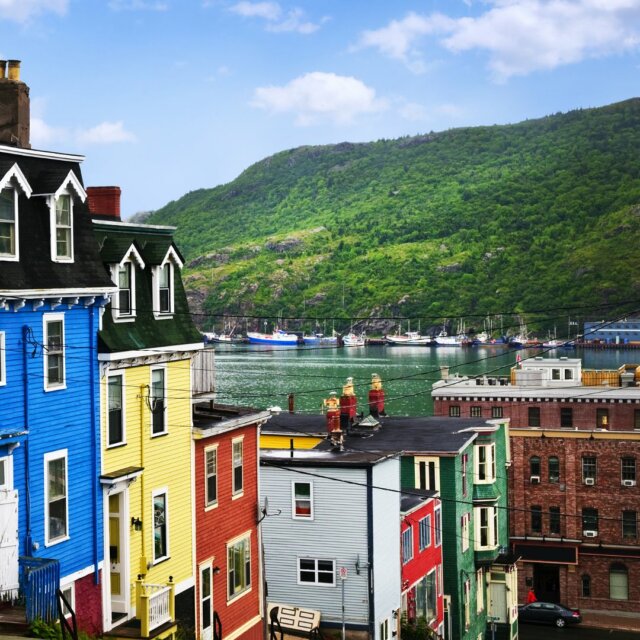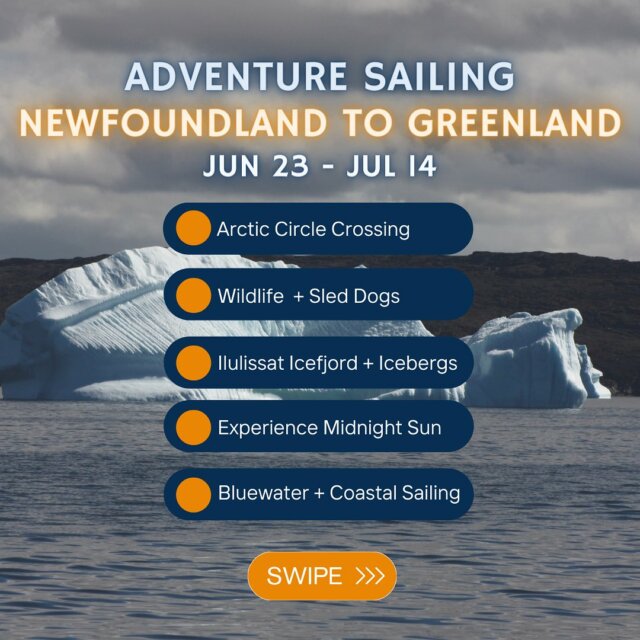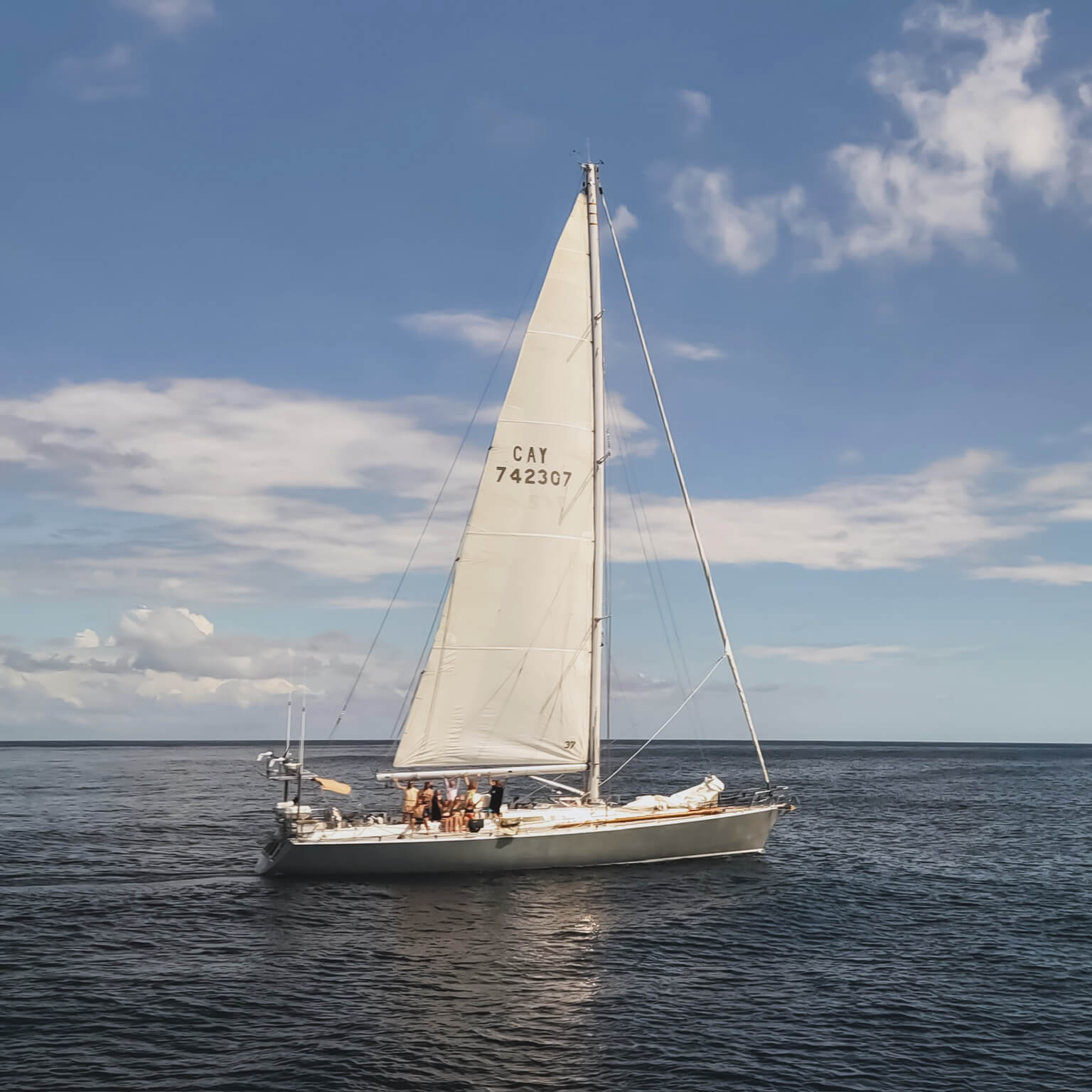Sea Dragon is just about to push clear of the last speck of land before she heads out across the open South Atlantic. The team landed on St. Helena 48 hours ago and is now pulling anchor. Though short, the stop was important for many reasons. The first sat phone email came through –
0745 GMT on mooring buoy off Mundens Point Jamestown St Helena
15.55.0N
005.43.05W
Intention to go ashore today and tomorrow departure 14th pm
Regards, Clive
You can actually see the boat anchored in the picture – she is farthest out, at the top of the picture frame with the tall, 3-spreader mast.
St. Helena gives the crew a break, a last touch with our natural home – land. As much as we love to go to sea, we are at last of the land. So a chance to park in the lee of the island, smooth the waters and go ashore is always refreshing for our crew. There is also a serious purpose captured in this short email brief from Stiv-
“Hey all, will write supporting blog posts for these photos once we’re at sea again. Leaving St. Helena about about 19:00 this evening. The dump was rudimentary, but not horrendous. Tilled often and not a whole lot of blow trash. It’s on the NE side of the island and judging by the treeline, the prevailing wind is onshore, though locals said it could switch. However, it’s in a slope that’s fall line is a slot canyon into the ocean. So it’s quite possible that large rain events would wash a fair amount out to sea. Also meant with the Director of Marine Affairs who is going to do beach transects for us as often as we like, and may be able to look at gut content of fish and pelagic birds for ingestion. The fishing industry here is pretty horrible, the take is about 11 to 15 tonnes a day. Given the size of this island. It’s pretty massive.
Saw a Whale Shark today out in the moorings. Awesome. Just the tale, which at first blush looks like a MASSIVE Great White dorsal fin, but no– I don’t think it’s very sharky here given the lack of food both pinniped and fish.”
Even in this short note, shot out across 6,000 miles through space, you can see the fundamental attraction of these islands for our team. At once he is talking about the landfills, sources of plastic debris- and the suspected heavy fishing toll that the local population takes on the surrounding waters. On the other the largest shark that has ever lived swims past Sea Dragon on anchor. Rivaling our 72′ 50ton vessel, these massive whale sharks are a fantastic symbol of a wild, healthy ocean. Certainly no threat to the steel hull of the boat- these giants are no more to the divers either. They are plankton feeders straining the smallest creatures from the sea.
I am left most worried about this line in another email sent on arrival:
Sea Dragon anchored in the lee of the island at St. Helena. Very rocky here, few beaches, but we got to one today and it was incredibly plasticized. More nurdles than I’ve ever seen. We collected some for Takada, took one minute to get a hundred!
Dale and Sara apparently dove on St.Helena- we are standing by for their reports from under water. Apparently rich in marine life with some coral, their views of this remote shallow water will be important.
This brief stop is part of a long string of oceanic island visits on our long expedition. The Canaries, Cape Verde, Bermuda, Azores, Seamounts, Ascension, and now St. Helena. Sailing large loops in these vast ocean basins, Sea Dragon is ironically only 700 miles from where she was just a few months ago on British Ascension. The team’s ability to safely handle the complex logistics and schedules of making these remote landfalls is equally impressive.
Now, out into the deep blue and 3,000 miles ESE to Uruguay.




























































































